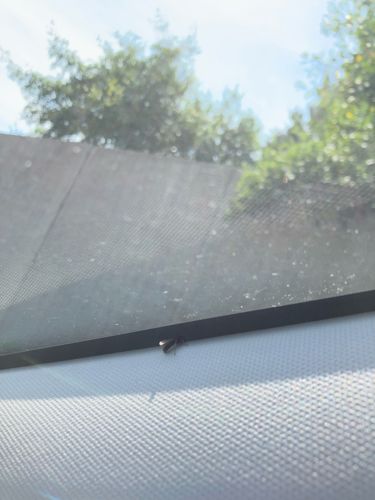Fruit Fly (likely)
Scientific Name: Drosophila spp. (e.g., Drosophila melanogaster)
Order & Family: Order Diptera, Family Drosophilidae (most commonly Drosophila melanogaster or a related species)
Size: 2-4 mm (Typically very small)

Natural Habitat
Commonly found near ripe, fermenting, or rotting fruits and vegetables, kitchens, compost bins, garbage disposals, and anywhere organic material is decaying or fermenting.
Diet & Feeding
Primarily decaying fruit and vegetables, fermenting substances like vinegar and alcohol, and other organic matter. Some species may also feed on sap or nectar.
Behavior Patterns
Flies are typically active during the day. They are known for their fast flight, keen sense of smell, and ability to land on most surfaces. Many species exhibit elaborate courtship rituals. Most undergo complete metamorphosis from egg to larva (maggot) to pupa to adult.
Risks & Benefits
Risks: Can be a nuisance in homes and agricultural settings, contaminating food and sometimes acting as vectors for spoilage microorganisms. Benefits: Widely used in scientific research, particularly in genetics and developmental biology, due to their short life cycle and ease of breeding. They also play a role in decomposition.
Identified on: 8/9/2025